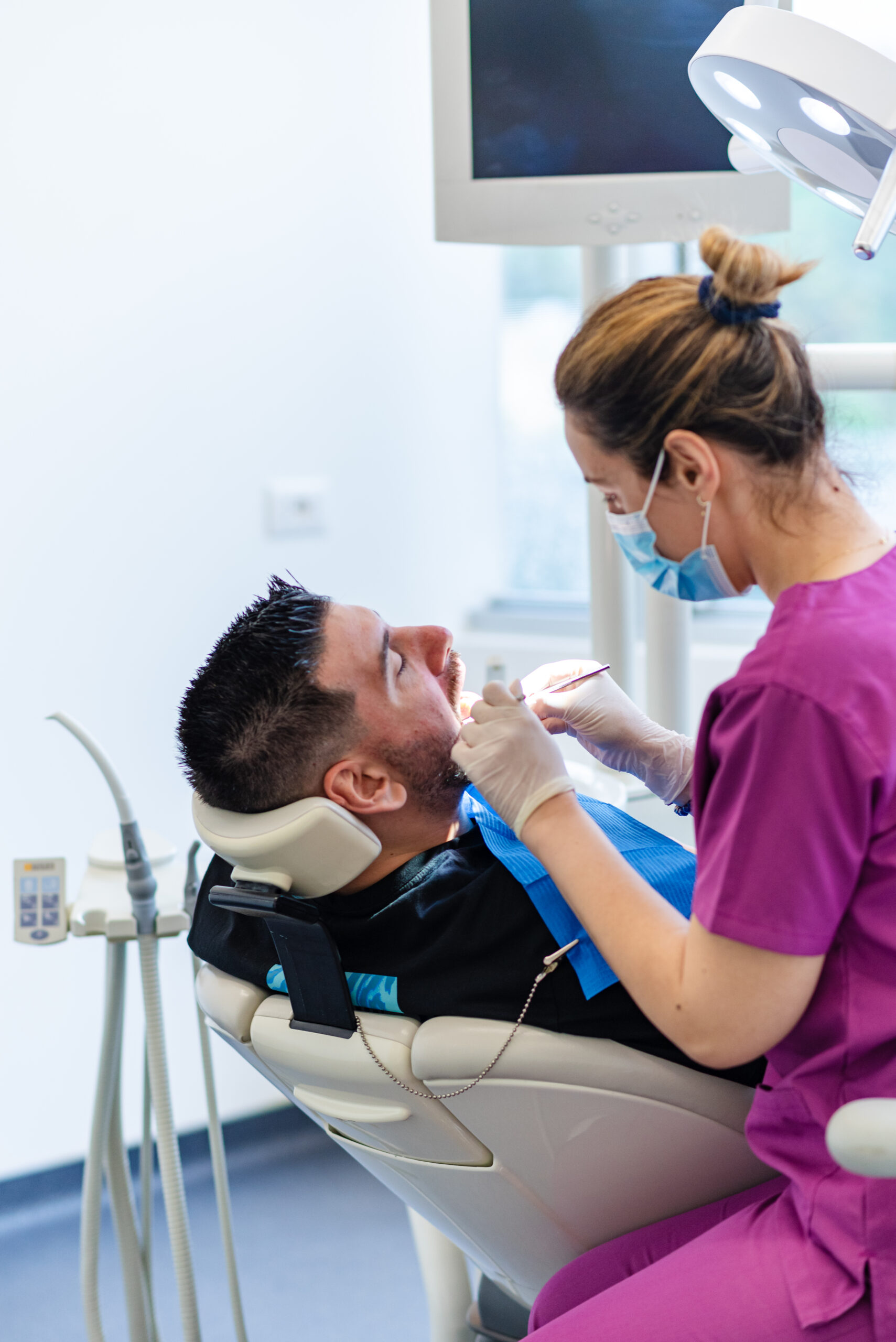Surgery and Implantology
Sinus Lift is a procedure performed to increase the amount of bone in the area of the molars of the upper arch, to prepare it for the insertion of one or more dental implants.
Bone Graft is a surgical procedure that uses bovine or transplanted bone to repair and rebuild diseased or damaged bone when bone loss has occurred in the jaw. This procedure is commonly performed before dental implant placement or when bone loss negatively affects nearby teeth.
Gummy Smile Surgery refers to all surgical procedures such as Gingivectomy (Crown Lengthening) by reducing the gum tissue to increase the exposure of the teeth and such as the Lip Repositioning which takes place with the removal of a small strip of tissue from the inside of the upper lip.
Extraction of wisdom teeth and impacted teeth requires considerable technical preparation, accurate knowledge of all the noble anatomical structures and mature surgical experience. It is essential to carry out correct treatment planning which allows, on the one hand, to minimize the risk of post-surgical complications (pain, edema, trismus, alveolitis, etc.) and, on the other, to be able to manage the latter correctly, always with the lowest biological cost for the patient.
Periodontal surgery are surgical treatments of periodontitis and periimplantitis, an infectious disease caused by the presence of bacteria, remediation of deep gum pockets, osteoplasty around the roots of the tooth or implants, bone regeneration with the application of a biocompatible bone substitute in the affected site ect.
Cosmetic surgery of the lower third of the face includes interventions on the asymmetries of the lips, Lip Lift, Mentoplasty, etc.
Cystectomy is an oral surgical procedure to remove a dental cyst from the jaw bone.
Pre-prosthetic surgery refers to a whole series of surgical procedures that facilitate and allow the application of a fixed or mobile prosthesis, guaranteeing good aesthetics and functionality of the same.
Frenctomy is a surgical procedure for the removal of one of the frenulums, which allows for the resolution of various types of problems relating to a short labial or lingual frenulum.
Dental implants act like artificial roots. They are implanted in the bone, creating a solid base for the positioning of dental prostheses (crown, bridge). Implants are the best replacement for lost or damaged natural teeth, they allow total recovery and aesthetic and above all functional improvement. Through a small and simple operation, the root of the lost tooth is replaced by a titanium implant, a material biocompatible with the human organism.
All on 4 are cases in which the entire edentulous upper or lower arch is restored with a fixed restoration anchored by four implants. These patients can have their teeth removed and implants placed on the same day, and in most cases, a temporary denture is placed after 1 day of surgery. After 4-6 months, the definitive fixed bridge of 12 crowns or an avitatated hybrid prosthesis is placed.
All on 6 and All on 8 through the placement of 6 or 8 implants can perform a complete rehabilitation and, at the same time, often apply the immediate loading technique: one day later, we can place a temporary fixed prosthesis without the palate. After 4-6 months the definitive fixed bridge of 12-14 crowns is placed.
Post-extraction implants is a technique that means extracting the root and placing the implant immediately in the same operation avoiding the lost time of bone healing and exploiting the biological width of the bone which normally collapses after the extraction.
Flapless implants are a technique that means placing implants without surgery, therefore in simple terms without using the scalpel blade, without surgery.
Immediate loading implants means placing the crown, bridge or prosthesis immediately after surgery.
Zygomatic implants are implants that are used in the rehabilitation of severe jaw atrophy. Unlike traditional implants, which usually do not exceed 18mm, the size of zygomatic implants is considerably longer (they can even measure more than 50mm) as they are anchored in the cheekbone. This type of bone is very resistant and allows the osseointegration of the implant.
Pterygoid implants are implants that are inserted very posteriorly into the maxilla (upper arch), close to the junction between the maxillary bone, palatine bone and sphenoid bone, in a situation of severe bone deficiency.
Subperiosteal implants are placed over the bone. This type of implant is used in cases where the bone has receded or is too thin to support an endosteal implant.

Committed To Dental Excellence
We Create Beautiful and Brighter Smiles
the kind and hospitable staff welcoming you warmly, in a comfortable and luxurious environment, similar to an art gallery; dedicated doctors who accompany you towards the art of their work, combining the craftsmanship of their hands, their artistic spirit and contemporary technology, so that you can benefit from a unique experience.
Dr. Michael Martinez
Master of Dentistry
How to Find Us
Address
1051 Tirana - Albania
Phone
+355 69 27 111 66
info@virtus.al

